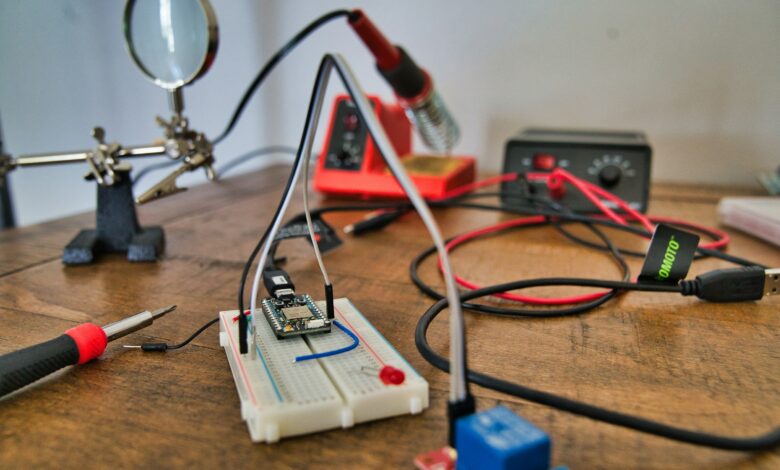
If your team still relies on spreadsheets, paper blueprints, or fragmented digital tools, your workflow might be costing more than you think. Today’s estimating software for electricians eliminates guesswork and accelerates job-winning bids.
Staying competitive requires a system that moves at the speed of your projects. That’s why leading tools like Drawer AI are redefining what it means to estimate accurately, consistently, and efficiently across any type of electrical scope.
How do you know when your estimating process is holding you back? Let’s explore the telltale signs.
You’re Losing Bids You Should Be Winning
Losing a job is frustrating – but it’s even worse when your bid is close. Inaccurate takeoffs or bloated labor projections often push your numbers just outside a competitive range.
Common causes:
- Relying on static templates without project-specific adjustments
- Manually counting devices and conduit
- Underestimating installation time due to lack of historical data
Solution: Implement an automated system that produces real-time takeoffs and labor projections.
You Can’t Keep Up with Bid Volume
Is your backlog growing while you miss opportunities? High-performing electrical firms often lose out because their estimating teams simply can’t respond fast enough.
In today’s bid-heavy market, speed is everything. Yet many estimators spend hours compiling basic scope items.
How to improve:
- Use takeoff tools that allow batch processing of drawings
- Standardize frequently used assemblies to cut prep time
- Deploy estimating assistants with AI to handle routine tasks
Your Estimates Vary Too Much Between Estimators
Lack of consistency across bids is a red flag for GCs and internal stakeholders alike. Discrepancies in material quantities or labor assumptions create confusion and reduce trust.
Fix this by:
- Building a shared library of assemblies and cost data
- Enforcing review protocols
- Adopting systems that apply logic uniformly
Errors Are Being Found Too Late
Discovering mistakes after a job starts often leads to change orders, profit loss, or rework. Errors in early-stage estimating can cascade through procurement, scheduling, and field execution.
Look out for:
- Missed symbols or device types
- Forgotten feeders, terminations, or subpanels
- Labor assumptions not tied to actual routing
Prevention tip: Use layered QA systems – one digital, one human. Software can catch omissions, while peer review ensures contextual accuracy.
Your Team Dreads Estimating Tasks
If estimating is seen as tedious or error-prone, your people may delay the process or rush through it. This mindset often stems from clunky tools or unclear processes.
Improve morale with:
- Clean, intuitive UIs that make navigation seamless
- Collaborative features that let junior estimators support senior staff
- Instant insights to reduce back-and-forth calculations
A streamlined estimating environment keeps your team focused on accuracy – not fixing broken spreadsheets.
You Spend More Time Double-Checking Than Building
When estimators spend more time verifying their own math than generating new estimates, your pipeline slows to a crawl.
What this indicates:
- Lack of trust in current tools
- Overreliance on manual calculations
- Gaps in project templates or labor formulas
No Insight into Win Rates or Historical Accuracy
Can you pinpoint why a recent bid failed? Or how accurate your last 20 estimates were? Without data visibility, it’s nearly impossible to improve long term.
Upgrade your visibility with:
- Estimating dashboards and trend graphs
- Feedback loops from project closeouts
- Integrated reporting tools to evaluate historical accuracy
| Metric | Insight Unlocked |
| Win Rate by Project Type | Focus on more profitable scopes |
| Labor Estimate vs. Actual | Refine labor assumptions |
| Material Cost Variance | Catch pricing changes early |
You’re Missing Out on Collaboration
Estimating isn’t a solo activity. It requires input from field foremen, project managers, and even suppliers. Legacy tools often silo this input, slowing decisions.
Enhance collaboration by:
- Using cloud-based systems that allow multi-user access
- Assigning comment threads to key drawings
- Sharing scoped breakdowns in real time
The Technology Learning Curve Feels Too Steep
Your team may be reluctant to adopt new systems – especially if they’re used to pen-and-paper workflows. That reluctance is understandable but can be overcome.
How to ease adoption:
- Choose platforms with embedded training and live onboarding
- Assign mentors internally to champion the transition
- Look for intuitive UIs and customizable dashboards
How to Fix the Process Before It Slows Growth
If two or more of these issues sound familiar, your estimating system is costing you time, revenue, and opportunities. But this isn’t a dead end.
Start by evaluating what’s slowing your team down – manual takeoffs, unclear workflows, or outdated systems. Then, seek platforms that solve multiple problems in one.
With modern electrical cost estimating software, teams can automate takeoffs, forecast labor, and analyze performance – all from a centralized hub. Tools like Drawer AI not only streamline your estimating process, but also position your business to scale intelligently.
Final Thoughts
Your estimating process should be a launchpad, not a bottleneck. By recognizing the signs of an outdated workflow and making strategic upgrades, you unlock time, reduce risk, and win more profitable work.
In the electrical contracting world, speed, accuracy, and visibility aren’t luxuries – they’re the new standard. The right tools don’t just help you keep up. They help you lead.




